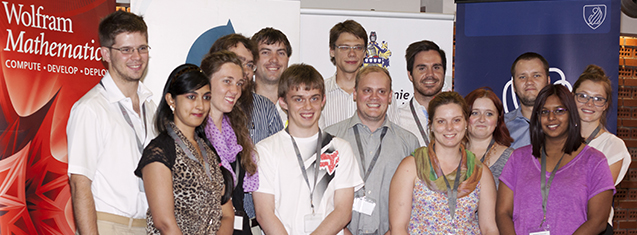Linguistic resourcefulness impresses at 15th Student Symposium on the Natural Sciences

UFS students walk away with more than half the prizes at this year’s Student Symposium on the Natural Sciences.
This year, the fifteenth annual Student Symposium on the Natural Sciences was hosted on the Bloemfontein Campus by the UFS Departments of Chemistry and Physics, together with the South African Academy for Science and Arts (SAAWK).
According to Dr Ernie Langner, Senior Lecturer in the Department of Chemistry, this symposium provides postgraduate students from all over South Africa the opportunity to present their research in Afrikaans, to learn from each other, receive feedback on their work through the review process, and to build networks. If their abstracts are selected for publication in the Suid-Afrikaanse Tydskrif vir Natuurwetenskap en Tegnologie, it also provides them with further exposure in the broader academic context.
Besides research of the highest quality, this year's symposium had no shortage of linguistic resourcefulness. “Students, accustomed to writing and expressing their research in English, astonished everybody with their beautiful Afrikaans. Outstanding research from honours, master's, and doctoral students was expressed in scientific terminology of the highest standard,” Dr Langner said.
The Student Symposium is the only event (worldwide) where the development of 'elektrostatiese potensiaalkaarte', 'femtosekonde pomp-proef spektroskopie', or 'endokrien-ontwrigtende chemikalieë' is explained step by step. This is where one hears enthusiastic students talking about how hard they are working on 'geïntegreerde drywende sonkragstelsels', or 'geneste virtuele rekenaars binne die wolkstelsel'. The results of hours of hard work in the lab, cold nights behind a telescope, or long midnight sessions in front of the computer, had to be condensed into 15-minute presentations on the synthesis of metal-organic networks, or metal-carbene complexes, the identification of pulsar rhythms, or the refining of rapid-eye technology.
Of approximately forty participants from five universities, eighteen were awarded prizes for their papers and posters. Students from the UFS walked away with more than half of the awards. Jacques Maritz (Physics) and his wife, Elizabeth, (Mathematics and Applied Mathematics) from the UFS were both awarded first place in their respective sessions.